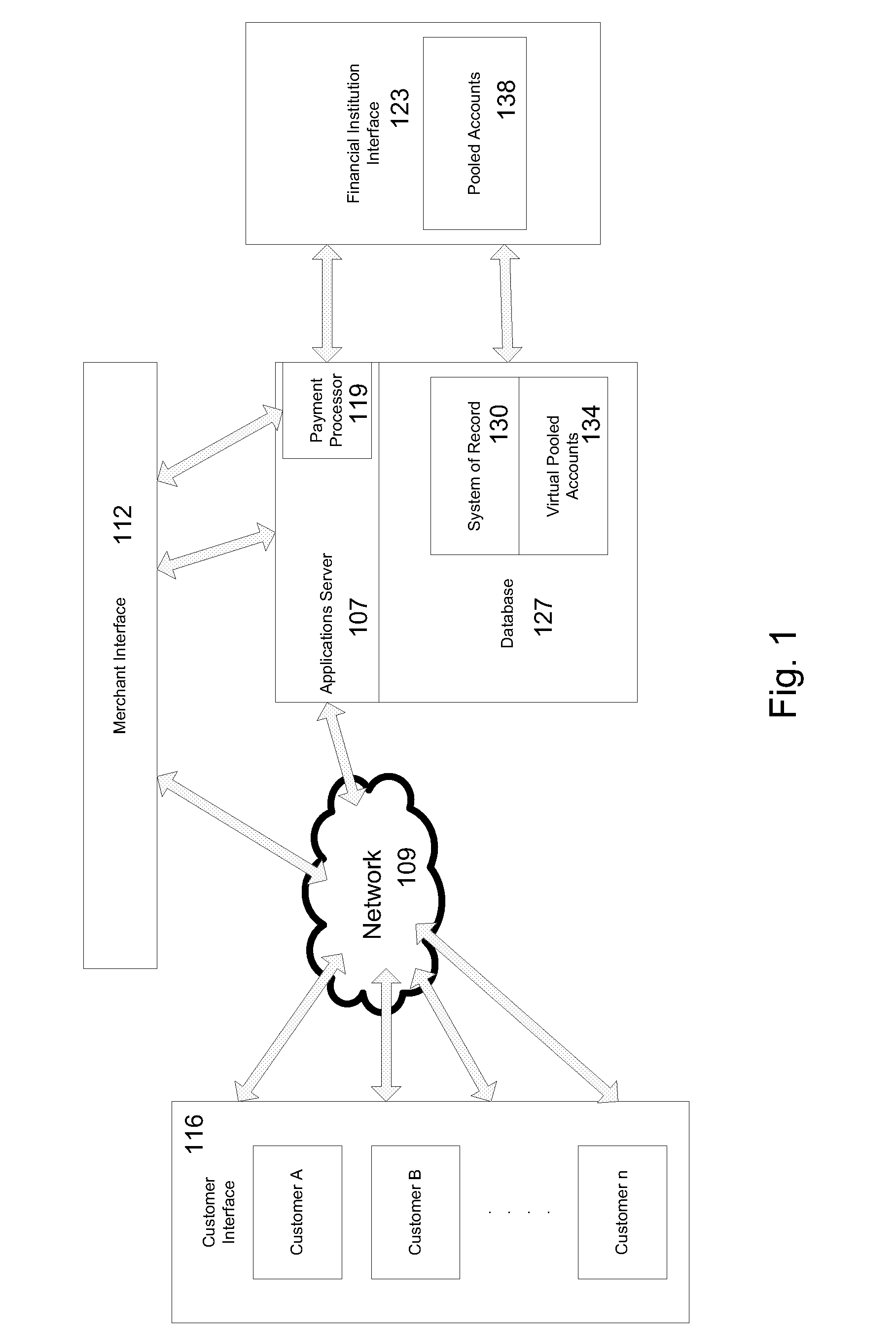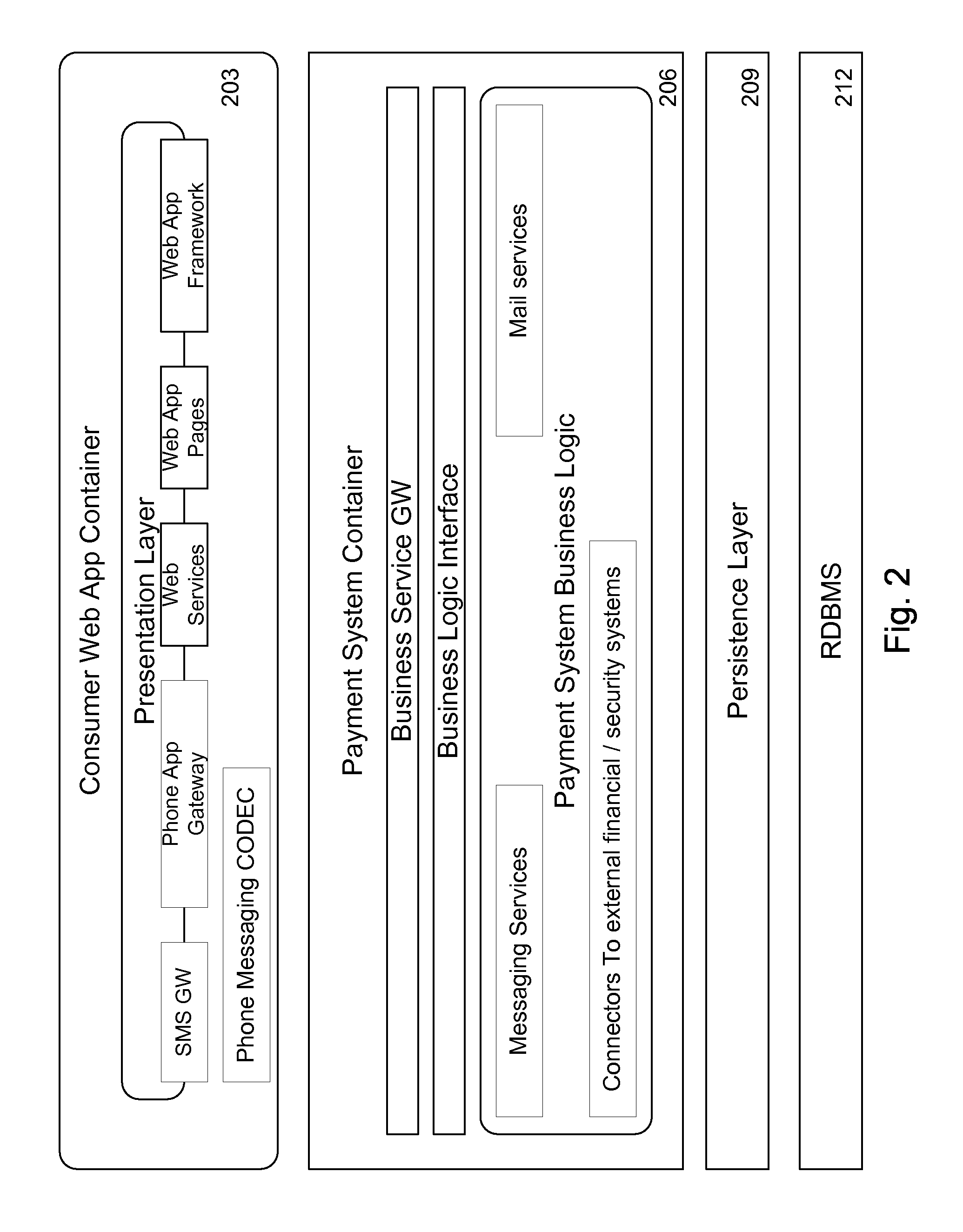Transacting Mobile Person-to-Person Payments
a mobile, person-to-person payment technology, applied in the field of mobile, individualized payment transfer infrastructure and method of transferring payment, can solve the problems of credit card, debit card and check fraud, significant losses for the payment industry, and fraud prevention is a significant drain on the profitability of the payment industry, so as to facilitate manual or automated load functionality, facilitate manual or automated unload functionality, and facilitate the effect of low cos
- Summary
- Abstract
- Description
- Claims
- Application Information
AI Technical Summary
Benefits of technology
Problems solved by technology
Method used
Image
Examples
embodiment 1a
[0306] Follow-up Payment Reminder. Existing member is reminded of payment upon new member signup. In the examples below, Obopay is used as an example of a specific payment system, but other payment systems may be used. A payment system may be called or known by any name. The obopay.com web site is specifically identified, but any appropriate web site, web site name, or IP address may be used. Also, the invention may be used in the context of other network infrastructures, not just the Internet.
[0307] 1. Existing member user A decides to invite nonmember user B to join by sending B money, which B has to claim by enrolling as an member.
[0308] 2. User A sends a payment transaction to B by inserting B's mobile phone number and the dollar amount. The system does not initially distinguish between payments sent to members and nonmembers.
[0309] 3. If the mobile phone number is not for a current member, user A receives the following message, “Note: Your payment to nonmember is pending.”
[0...
embodiment 1b
[0315]FIG. 10 shows a payment system and a person-to-person payment according to a technique as described for embodiment 1B of the invention.
[0316] 1. Existing member user A decides to invite nonmember user B to join by sending B money, which B has to claim by enrolling as a member.
[0317] 2. User A sends a payment transaction to B by inserting B's mobile phone number and the dollar amount. The system does not initially distinguish between payments sent to members and nonmembers.
[0318] 3. If the mobile phone number is not for a current member, user A receives the following message “Note: Your payment has been sent to a nonmember user. Would you like us to extend an invitation for them to join? Yes / No.”
[0319] 4. If the answer to step 3 is yes, user A also receives an e-mail worded as follows: “Thank you for your referral. We have contacted your friend and invited them to sign up for our system.”
[0320] 5. The payment is not debited from user A's account.
[0321] 6. User B receives a ...
embodiment 2
[0326] Personal Reserved Funds Viral—Existing members are allowed to set aside funds that are reserved for viral payments. For example, a user may set aside a certain number of dollars of the user's account to settle viral transactions. These funds will not be otherwise available to the user for use in nonviral transactions (e.g., spending by debit card). In an implementation, the user may change reserved amount through a user account maintenance function.
PUM
 Login to View More
Login to View More Abstract
Description
Claims
Application Information
 Login to View More
Login to View More - R&D
- Intellectual Property
- Life Sciences
- Materials
- Tech Scout
- Unparalleled Data Quality
- Higher Quality Content
- 60% Fewer Hallucinations
Browse by: Latest US Patents, China's latest patents, Technical Efficacy Thesaurus, Application Domain, Technology Topic, Popular Technical Reports.
© 2025 PatSnap. All rights reserved.Legal|Privacy policy|Modern Slavery Act Transparency Statement|Sitemap|About US| Contact US: help@patsnap.com



